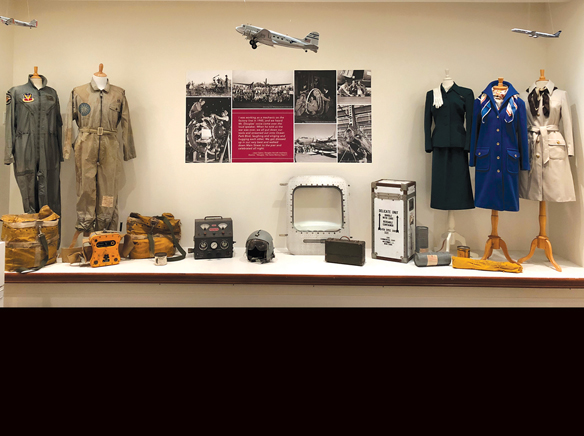
By Shari Barrett
While theater will always be my favorite form of arts and culture, there are so many other ways to appreciate the artistic endeavors of those who create a path for others to follow.
I recently discovered the Santa Monica History Museum, created by the “Historical Activities Committee” of Santa Monica’s Centennial Celebration in 1975 and by a public poll, now designated as the official collector and preserver of the history, art, and culture of the Santa Monica Bay Area. Its historical collection grew tremendously during the first ten years with artifacts, memorabilia, and photos donated by descendants of land grantees, pioneers, and celebrities who were living in the city at that time.
This true “Santa Monica treasure” was founded as a museum in 1988 by the society with the assistance of Louise and Bob Gabriel who had been active in the community for years and had a strong love for Santa Monica and its history.
Since then, the museum has been relocated several times, but now has a permanent home on the campus of the Santa Monica Main Library thanks to the City of Santa Monica. The Museum has six galleries and a research library, with its beautiful design attributed to architect Kristina Andresen and splendid tile and stonework throughout generously donated by Bourget Bros. Building Materials.
The Museum’s historical collections are comprised of over one million items with more than 600,000 rare photographs, with permanent and special rotating exhibits, special events, lectures, children’s workshops and research services.
Some of the Museum’s well received exhibits have covered Lawrence Welk, Marion Davies, The Outlook Newspaper, “Life at The Miramar,” Santa Monica Civic Auditorium, Santa Monica Fire Department’s 125th Birthday, mementoes from Pacific Ocean Park, and the Aero Theatre’s 75th Anniversary.
One of the largest, most exciting and unique exhibits ever held at the Museum was the “Love, Shirley Temple” exhibit, with the facility being one of only five museums in the world chosen by Shirley Temple’s children to display their mother’s personal, childhood collection prior to being sold at an auction held by Theriault’s. The permanent evolving exhibit with many of the child star’s costumes is so popular, it is brought back each April to celebrate the former Santa Monica resident’s birthday.
The current special exhibit running through Feb. 23 is “From Biplanes to Bombers: Santa Monica Airport’s First Fifty Years 1917-1967.” It features the early history of the airport and its development over the years, as well as artifacts such as plane parts, radios, flight suits and uniforms. The landing strip once known as Clover Field was created when airplane mania hit Santa Monica in the 1910s, with spirited young locals building homemade flying machines in their garages.
In his autobiography, Hollywood legend Cecil B. DeMille wrote about learning to fly at Clover Field, and the airport was also used as a location for many silent films. Douglas Aircraft’s rapid development in Santa Monica in the early 1920s led the company to produce the airplanes that would complete the first Round the World Flight in 1924.
When you visit, be sure to notice photographs commemorating that event, as well as ones of the first all-female pilots air race known as the Powder Puff Derby beginning in 1929, with famed aviators such as Amelia Earhart and Bobbi Trout competing.
The Santa Monica History Museum at 1350 7th St., Santa Monica,is open to visitors Tuesday and Thursday from noon to 8 p.m. and Wednesday, Friday and Saturday from 10 a.m. to 5 p.m., with its gift shop open during all operating hours. The facility is closed Sunday and Monday. General admission is $10 ($15 per couple), $5 senior and students, and always free to children younger than 12 accompanied by an adult, museum members, veterans and active-duty military.
The museum is handicap accessible with free docent?led tours available to school classrooms and youth groups. For more information, including upcoming Shirley Temple and Route 66 exhibits, visithttps://santamonicahistory.org/and then make plans to spend time with your entire family enjoying the history of Santa Monica, no doubt taking a walk down your own memory lane.
